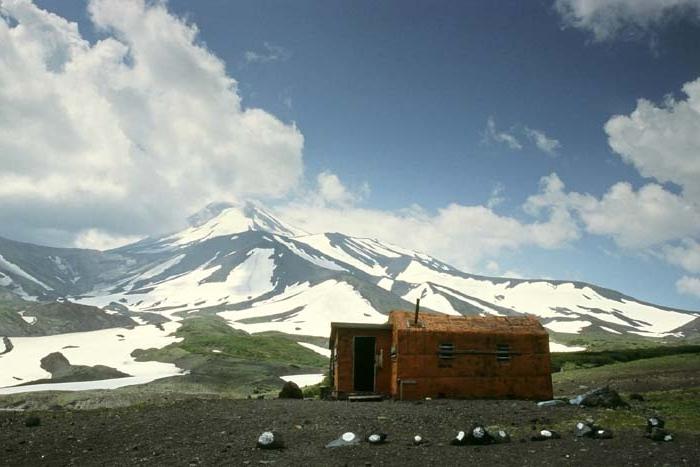The Kamchatka Peninsula is one of the richest places on earth with volcanoes, which, perhaps, is second only to Iceland and Hawaii. In this region of the Pacific Ocean, the so-called "Ring of Fire", there are more than a hundred active volcanoes and about 30 of them have woken up only recently.
The volcanoes of Kamchatka, today recognized as active, form a 700-kilometer volcanic belt from Shiveluch volcano, which is located in the north of the peninsula, to Kambalny volcano in the south. Energetic volcanism in Kamchatka, as well as on the neighboring Aleutian and Kuril island arcs, is due to the movement of the Pacific plate under the Eurasian tectonic plate.
Over the past few thousand years, about 30 very large (Plinian) eruptions have occurred, as a result of which approximately 1 km 3 of magma has been thrown out. According to these data, today Kamchatka is the place on earth with the highest frequency of large explosive eruptions.
The most active volcanoes in Kamchatka are Klyuchevskaya, Karymsky, Shiveluch and Bezymyanny.
The Kamchatka volcano Klyuchevskoy - the largest active volcano in Eurasia - rises 4750 m above sea level. He has a perfect, unusually beautiful cone. The age of this volcano is about eight thousand years. The first eruption was noted in 1697. Kluchevskoy volcano in Kamchatka today attracts many tourists who want to see one of the most beautiful volcanoes in the world. On average, eruptions occurred every 5 years, sometimes annually, and it happened that they continuously lasted several years. The most powerful of them occurred in 1944-1945. Klyuchevsky’s activity is also characterized by “parasitic” craters located 8–25 km from the main one.

Shiveluch Volcano in Kamchatka - one of the most active and largest volcanoes - is characterized by the most powerful eruptions. It is located 80 km from Klyuchevsky. About 60 major eruptions have occurred on Shiveluch over the past few thousand years, the most disastrous of them date back to 1854 and 1956, when most of the lava dome collapsed, resulting in destructive avalanches of debris. This Kamchatka volcano belongs to the Klyuchevsky group of volcanoes and it is about 65 thousand years old.
Karymsky volcano is relatively low (1486 m) and young (6100 years) - the most active. Only in this century more than 20 eruptions occurred, and the last of them began in 1996 and lasted 2 years. Karymsky eruptions are accompanied by bursts and emissions of ash from a central crater with pouring lava. The lava that the Karymsky volcano erupted is so sticky that, as a rule, glowing streams do not always reach the foot. The last eruption coincided with the underwater eruption of Karymsky Lake, located 8 km away. It lasted for only 20 hours, but in this short time there were about 100 underwater splashes, each of which was accompanied by tsunami waves reaching 15 m in height. Due to the eruption of the Karymskoye volcano, the water in which was very fresh and clean, turned into the largest natural reservoir with the most acidic water in the world.

Kamchatka Bezymianny volcano is located on the southeastern slope of the extinct volcano Kamen. Traces of lava flows can be found on the top of its slopes. This is a small and young volcano (4700 years old), which was formed on top of a larger ancient volcano. In the mid-1950s, an eruption occurred, after which a large crater formed in the form of a horseshoe. Since then, Bezymyanny has been recognized as one of the most active volcanoes in Kamchatka. A new lava dome grows inside the crater, which often leads to explosive activity and pyroclastic flows. Since 2011, the volcanic dome has almost filled the crater.